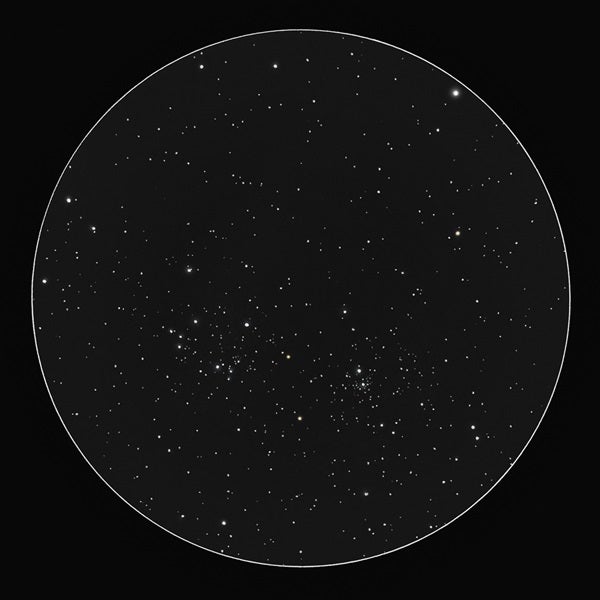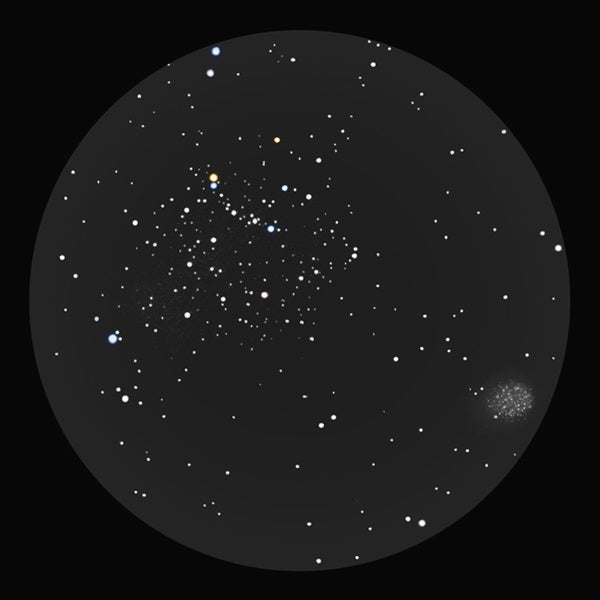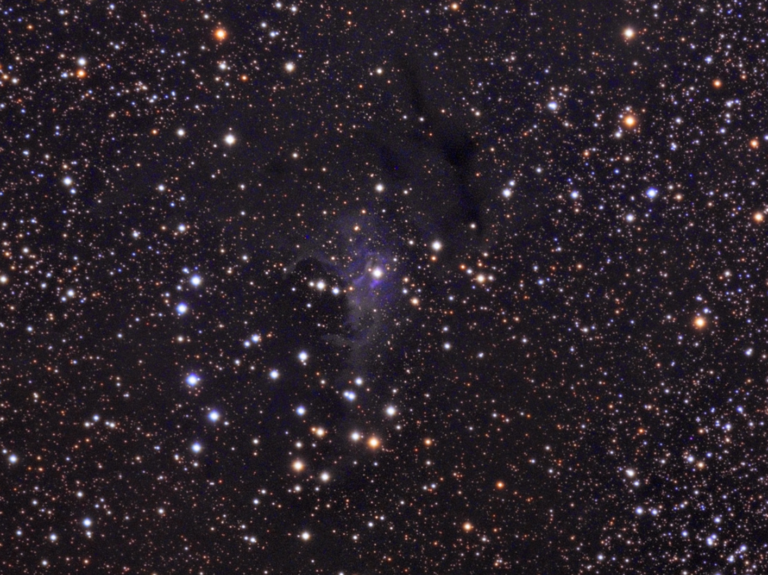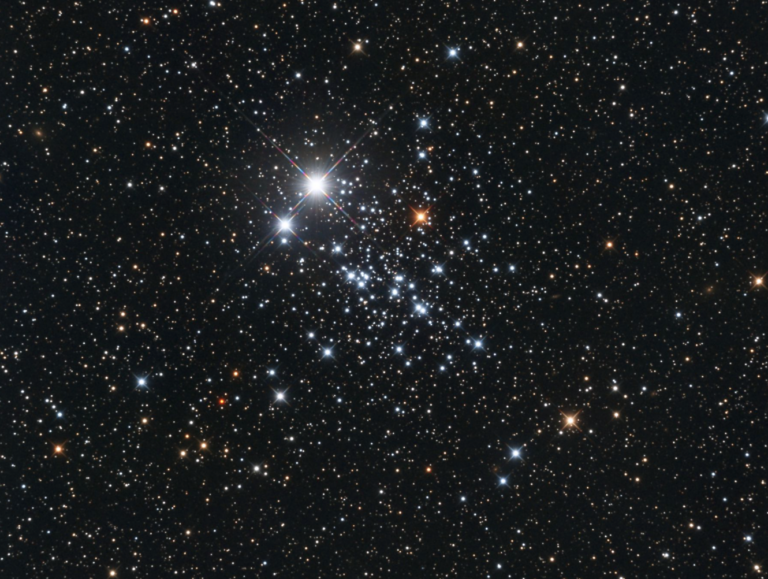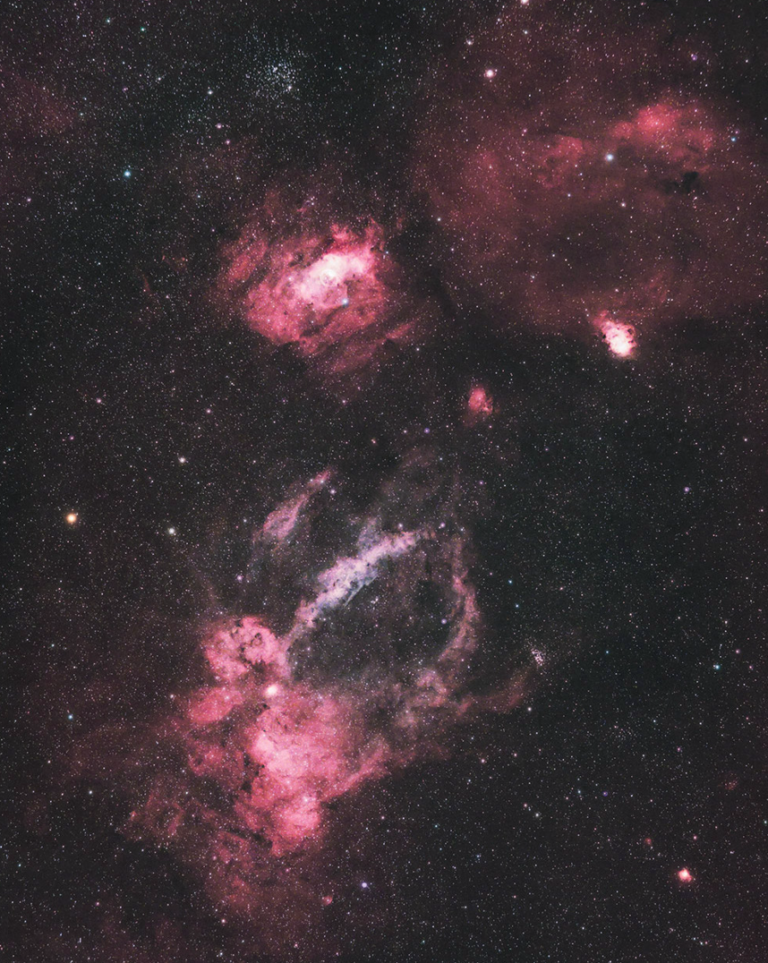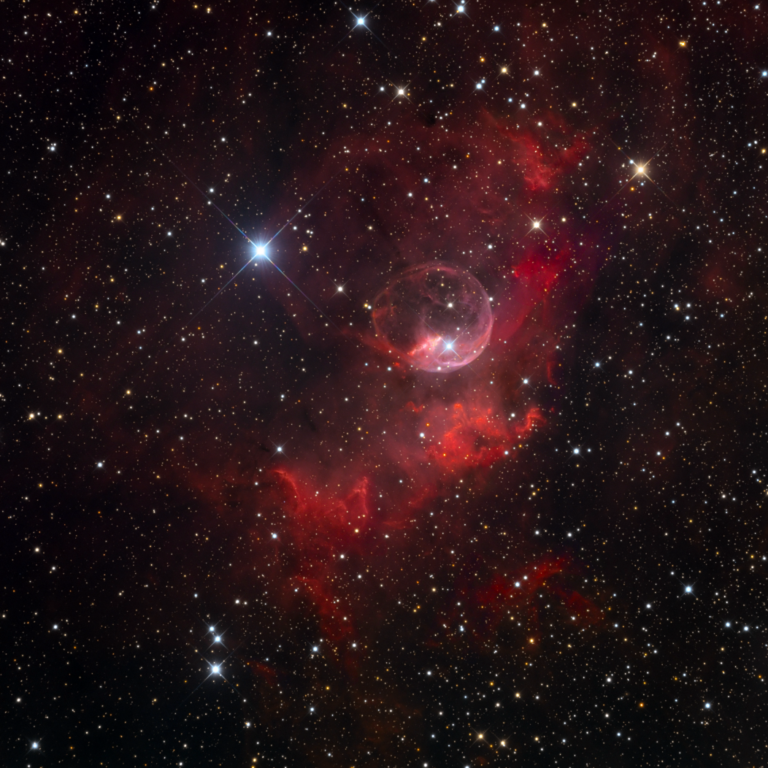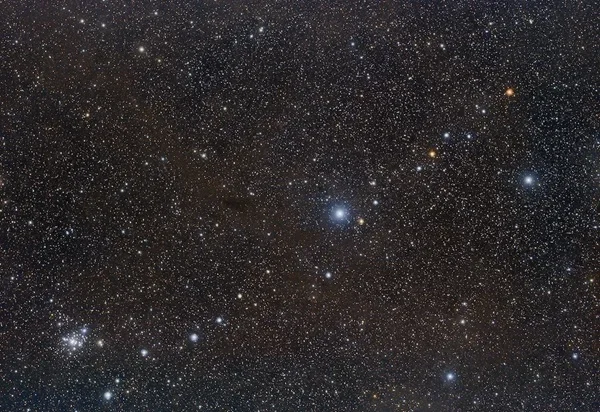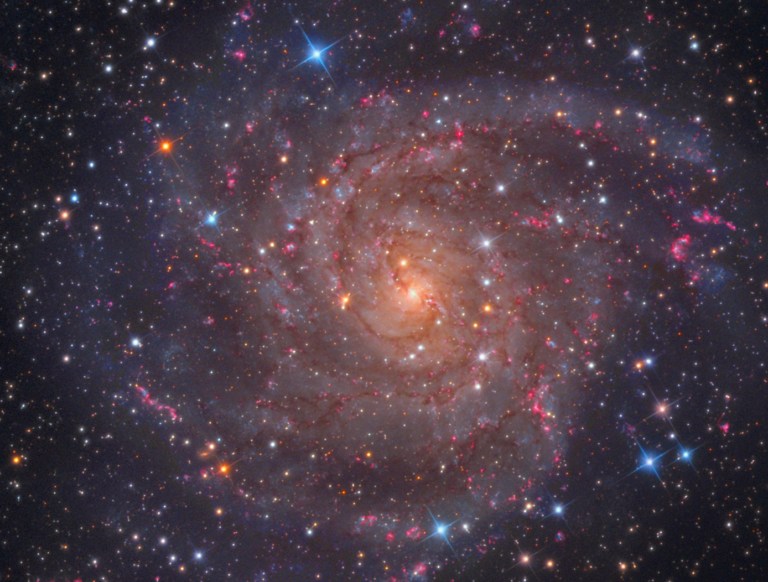“You want me to sketch a pair of open clusters? But look at all those stars!”
Why shy away from tackling those magnificent glistening views? In fact, you might draw them with ease by following a few simple guidelines. I’ll explain how starting with a popular duo in the constellation Gemini, M35 and NGC 2158.
The larger of the two, M35 has a diameter of 28′ and lies 2.3° northwest of magnitude 3.3 Eta (η) Geminorum. With a magnitude of 5.1, it’s detectable to the unaided eye under dark skies. This diffuse young cluster is probably best known for its bright chain of stars curving northeast to southwest, led by a striking yellow and blue double whose components shine at magnitudes 7.6 and 8.9.
M35’s companion, NGC 2158, lies just to the southwest. It glows at magnitude 8.6 and measures 5′ across. When I use a wide-angle eyepiece in an 8-inch scope, both clusters fit in the same field of view at 125x. NGC 2158 is a remote, compact cluster that provides suitable contrast to its neighbor, but don’t be fooled by its high star density. It looks dim and small by comparison, but it’s not
Done? Great! Now you’re ready to move up to the big leagues. Perhaps the most famous cluster pair of all is the Double Cluster in Perseus, NGC 869 and NGC 884. The view is spectacular, but you’ll need a wide-field, low-power telescope/eyepiece combo to see them together. Each one is similar in size to M35 and almost as bright, with a separation of only 0.5°. They lie in the Perseus OB1 association. Astronomers think they originated from the same star-forming region.
The western cluster, magnitude 5.3 NGC 869, is a few million years younger than its partner. Using an 8-inch scope at 125x, you’ll resolve nearly 100 of its stars, and you’ll pick out another 50 in NGC 884, which shines at magnitude 6.1.
If fatigue sets in, do yourself a favor — end the session and continue it another night. My sketch of the Double Cluster took 4½ hours over the course of two observing periods.
Now that you have useful guidelines, sharpen those pencils. Soon you’ll be plotting stars by the cluster … cluster pairs, that is!


